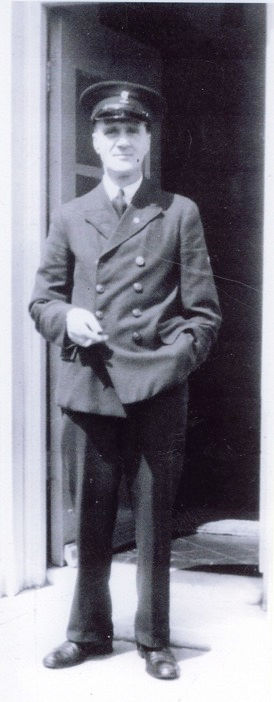PRIVATE FRANK NOLAN EXTRAORDINARY JOURNEY THE GREAT WAR MEDICAL SERVICES 1 MEDICAL SERVICES 2 AMBULANCE TRAIN MILITARY HOSPITALS
WAR AND MEDICINE WHEN THEY SOUND THE LAST ALL CLEAR GROUP CAPTAIN DOUGLAS BADER GROUP CAPTAIN DOUGLAS BADER CBE DSO '
THE MEDICAL MEMORIES ROADSHOW
‘To understand where we are today
We have to know where we have come from’

Mill Road bombing photograph courtesy of Liverpool Echo
Dark days
The German Luftwaffe (Air Force) made about eighty air raids on Merseyside between August 1940 and January 1942 because of its strategic significance as the country's largest West Coast Port. This made Liverpool the most heavily bombed British city outside London These raids reached their peak in the seven-night blitz in May 1941. The bombing was aimed mainly at the docks, railways and factories, but large areas were destroyed or damaged on both sides of the Mersey. Throughout the bombing campaign about 4,000 people were killed, including 2,736 in Liverpool, 454 in Birkenhead and 424 in Bootle.
There were many tragedies throughout the Blitz; all dealt with heroically by the Emergency Services and the public. The Liverpool Ambulance Service, boosted by auxiliary ambulances driven by volunteers (mainly women), played a front-line role during the Blitz. They were greatly assisted by First Aid parties from the Air Raid Precautions (A.R.P.) and other rescue services.
Two of the worse incidents were the bombings of Durning Road School and Mill Road Infirmary
On November 29, 1940, 300 people sought refuge in the Durning Road Shelter when a German parachute mine exploded above the shelter. 166 people were killed and scores more badly injured in the explosion and horrific aftermath as furnaces burst and boiling water and steam scalded those trapped under the rubble.
'The Durning Road bombing was the worst civilian incident of the war'
Winston Churchill
On 3rd May 1941 the Mill Road Maternity Infirmary itself fell victim to the German bombing with a direct hit on the maternity unit killing many mothers and their new babies. Several Ambulance drivers were killed alongside a number of medics and nurses who were killed whilst operating on a man who miraculously survived. In all approximately 80 people died in the tragedy. The target the Luftwaffe were after was that of Everton Reservoir which was in close proximity to the Infirmary.
Roll Call of Ambulance Drivers who died at Mill Road on 3rd May 1941.
Thomas Ernest Atherton, ambulance driver 54
Frederick Bartlett, ambulance driver 44
Cecil Coventry, ambulance driver, 38
James Cullen, ambulance driver, 65
Percy Darby, ambulance driver, 61
Eugene Louis Fawcett, ambulance driver, 58
Samuel Fisher, ambulance driver, 32
Daniel Henderson, ambulance driver, 42
Walter Johnson, ambulance driver, 41
William Martland, ambulance driver, 29
John Newell, ambulance driver, 46
John Rossiter, ambulance driver, 50
Henry Frederick Sutton, ambulance driver, 24
Charles John Tuft, ambulance driver, 51
The tragic death of Henry Frederick Sutton greatly inspired his younger brother Dougie Sutton to join the Ambulance Service. This he did on the 6th May 1951 and he served a long and loyal career lasting over 40 years.
When Eric Atherton joined the Ambulance Service in 1976; his father then told him that his Grandfather Thomas Ernest Atherton was also an Ambulance Driver who had tragically been killed in the bombing of Mill Road Infirmary.
'Albert was on the late shift (3-11) when an air raid started, most of the shift from Belmont Road went to the shelter at Mill Road Hospital. Albert decided to cycle home, Mill Road received a direct hit, with a great loss of life which included many of the ambulance personnel'
The daughter of Ambulance Driver Albert Edward Buckley - Mrs Allen
